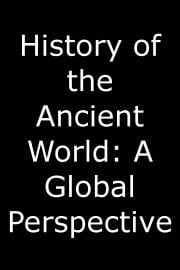
In episode 39 of History of the Ancient World: A Global Perspective, titled Comparative Armies: Rome, China, Maya, viewers embark on an enlightening journey that examines the military formations, strategies, and organizational structures of three distinct ancient civilizations: Rome, China, and the Maya. This episode delves deep into the complexities of warfare and the accompanying sociopolitical dynamics that shaped these powerful societies, offering both a comparative analysis and a celebration of their unique military heritage.
The episode begins by introducing the audience to the Roman military, one of the most formidable fighting forces in history. With a focus on the intricacies of the Roman legions, the episode explores their tactical versatility, cohesion, and the rigorous training that Roman soldiers underwent. The program effectively contextualizes the role of the Roman army within the expanse of the Empire, noting how its influence extended across Europe, North Africa, and parts of the Middle East. The commentary sheds light on the innovative strategies employed by renowned military leaders, such as Julius Caesar and Augustus, and discusses how their conquests were facilitated by the institution of the legion, which blended discipline with adaptability.
Moving east, the episode transitions to the ancient Chinese military, specifically focusing on the armies that were crucial to the various dynasties throughout China's long history, including the Qin and Han dynasties. Viewers learn about the centralization of power that characterized China’s military organization and how this influenced not only military tactics but also the overarching governmental structure. The program reveals insights into the technological advancements that the Chinese military harnessed, such as the use of chariots, cavalry, and crossbows, enabling them to dominate vast territories. The episode also highlights the philosophical underpinnings of warfare as expressed in texts like Sun Tzu’s "The Art of War," illustrating how strategy wasn’t solely based on force but also cunning and psychological warfare.
Shifting gears, the episode immerses viewers in the world of the ancient Maya, whose military conquests were characteristically tied to their religious and social systems. The Maya civilization is often celebrated for its sophisticated culture, but the episode reveals that their military prowess was equally critical to their societal advancement. The program showcases how warfare was interwoven with ritual, and how victories could enhance a city-state's status and influence. The unique organization of Maya armies, including the use of specialized units and alliances between city-states, emphasizes a different approach to conflict, showcasing the intricacies of warfare in a civilization that was often defined by decentralized power structures.
Throughout the episode, richly detailed visuals and compelling reenactments help to bring the battlefields of these ancient empires to life. Viewers are taken on a tour of significant battles, tactical innovations, and the ways in which geography influenced warfare strategies in each culture. The program does an excellent job of illuminating the contrast in military ideology—whether through the disciplined formations of the Roman legions, the strategic sophistication of Chinese tactics, or the ritualized warfare of the Maya.
In addition to the military mechanics, the episode thoughtfully explores the broader implications of military power on each civilization’s culture, economy, and interactions with neighboring states. The military, as the episode posits, was not merely an instrument of conquest; it also served as a foundation for trade, diplomacy, and cultural exchange. This aspect is particularly significant as it establishes how these ancient armies contributed to the legacy of their respective civilizations, leaving indelible marks on history long after their decline.
By the episode's conclusion, viewers are invited to reflect on the intersections between these militaristic entities, considering how their capabilities shaped their historical trajectories. A comparative lens is drawn, facilitating an understanding of how diverse contexts—geographical, cultural, and technological—produced distinct military traditions and led to successes and failures alike.
In sum, Comparative Armies: Rome, China, Maya offers an engaging and insightful exploration of ancient military powers through a global lens. By juxtaposing the strategies, structures, and influences of these three civilizations, the episode encourages viewers to appreciate both the commonalities and divergences within historical warfare, ultimately enriching one’s understanding of the ancient world and the legacies that continue to resonate today. This examination serves as a reminder of how the past informs the present, providing essential lessons in strategy, governance, and the human condition in times of conflict.
-
Genres
-
Channel
-
First AiredDecember 16, 2011
-
Content RatingTV-PG
-
Runtime28 min
-
LanguageEnglish

-
 Watch Unlimited Prime Video TV Shows
Watch Unlimited Prime Video TV Shows
-
 Anytime, Anywhere
Anytime, Anywhere
-
 Ad-free Videos
Ad-free Videos


 Watch Unlimited Prime Video TV Shows
Watch Unlimited Prime Video TV Shows
 Anytime, Anywhere
Anytime, Anywhere
 Ad-free Videos
Ad-free Videos